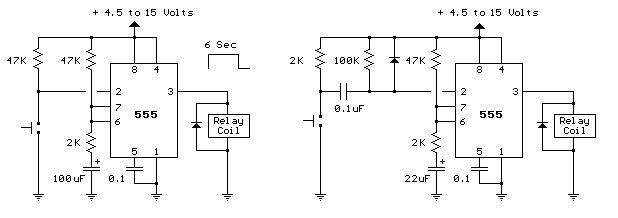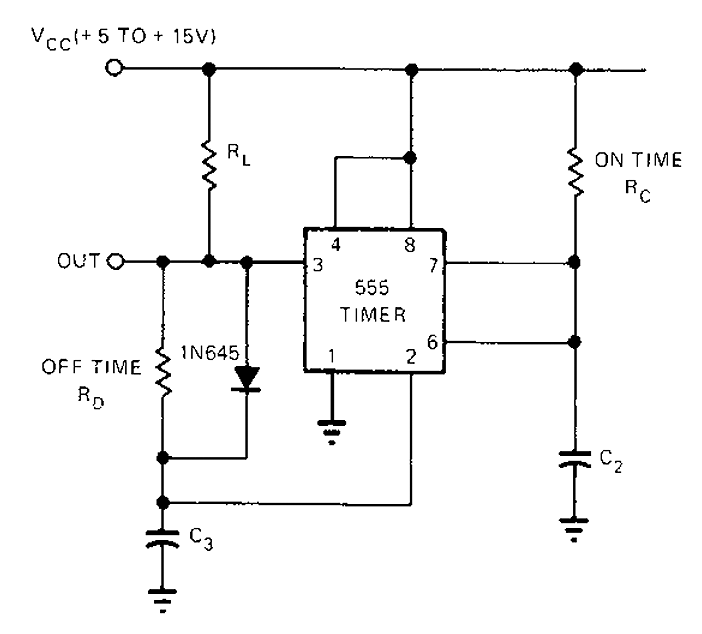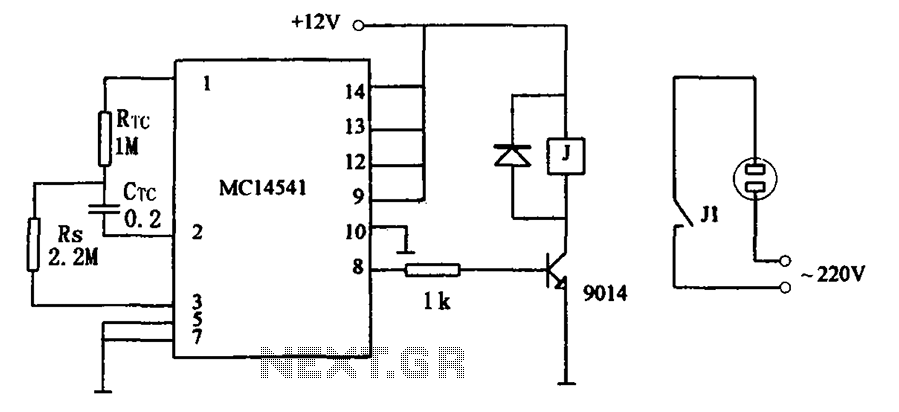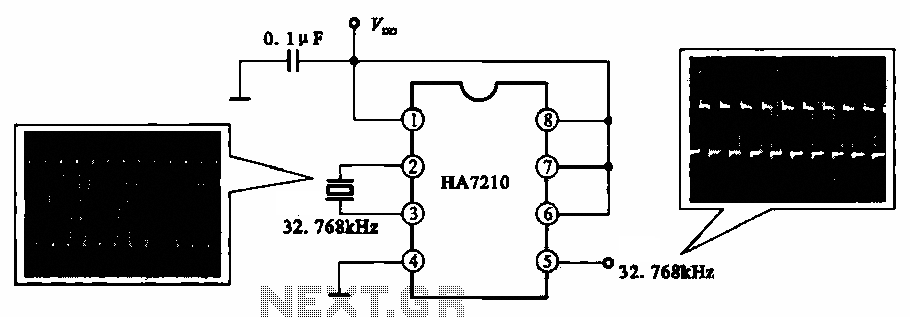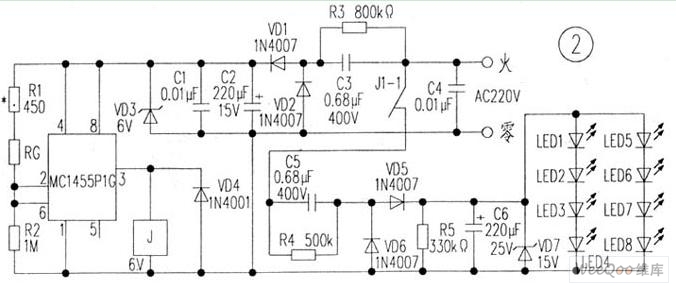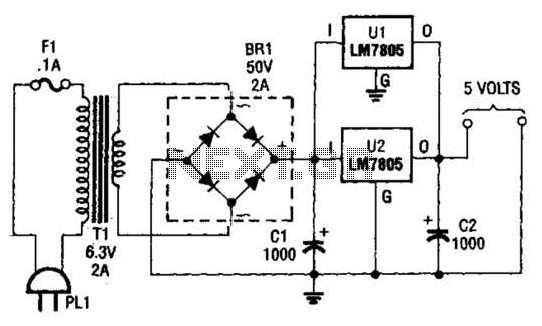
Triangle- And Square-Wave Generator Circuit

The circuit generates precision triangle and square waves. The output amplitude of the square wave is determined by the output swing of operational amplifier A1, while the ratio of resistors R1 to R2 sets the amplitude of the triangle wave. The frequency of oscillation for both waveforms is approximately 1/(0.69 ft C). The square wave maintains a 50% duty cycle even if the oscillation amplitude is not symmetrical. Utilizing a fast operational amplifier in this circuit enables the generation of high-quality square waves at relatively high frequencies. Additionally, since the amplifier operates in an open-loop configuration, compensation is unnecessary. The triangle-generating amplifier should be a compensated type. A dual operational amplifier, such as the MC1458, is suitable for most applications.
The described circuit is designed to produce high-precision triangle and square waveforms, which are widely used in various electronic applications, including signal processing, waveform generation, and testing. The circuit operates by employing an operational amplifier (op-amp) configured to generate these waveforms, leveraging the properties of feedback and resistor ratios to control amplitude and frequency.
The square wave output is defined by the op-amp A1's output swing, which is influenced by the power supply voltage and the characteristics of the op-amp itself. The amplitude of the triangle wave is established by the feedback network formed by resistors R1 and R2. The relationship between these resistors determines the peak-to-peak voltage of the triangle waveform, allowing for precise control over the output characteristics.
The oscillation frequency, given by the formula 1/(0.69 ft C), indicates that the frequency is inversely proportional to the product of the feedback capacitor (C) and a time constant factor (t). This relationship is critical for applications requiring specific frequency outputs, such as modulation and timing circuits. The circuit's ability to maintain a 50% duty cycle for the square wave output is particularly beneficial in digital applications, ensuring that the waveform remains symmetrical, which is essential for accurate timing and signal integrity.
The choice of a fast op-amp is crucial for the circuit's performance, as it directly affects the rise and fall times of the square wave output. Fast op-amps can handle higher frequencies without significant distortion, thus ensuring that the output waveforms are clean and well-defined. The open-loop operation of the amplifier simplifies the design by eliminating the need for additional compensation, streamlining the circuit while maintaining performance.
For the triangle wave generation, a compensated op-amp is recommended to ensure stability and linearity in the output waveform. The MC1458 dual op-amp is an excellent choice for this application, providing flexibility to implement both the triangle and square wave generation within a single package. This integration reduces board space and component count, making the design more efficient.
In summary, this circuit provides a robust solution for generating precision triangle and square waves, with adjustable amplitude and frequency characteristics suitable for various electronic applications. The use of high-performance op-amps and careful design considerations ensures reliable operation and high-quality waveform generation. The circuit will generate precision triangle and square waves. The output amplitude of the square wave is set by the output swing of op amp Al, xndRl/R2 sets the triangle amplitude. The frequency of oscillation in either case is approximately l/0.69ftC. The square wave will maintain 50% duty cycleeven if the amplitude of the oscillation is not symmetrical.
The use of a fast op amp in this circuit will allow good square waves to be generated to quite liigh frequencies. Because the amplifier runs open-loop, compensation is not necessary. The triangle- generating amplifier should be a compensated type. A dual op amp, such as the MCI458, can be used for most applications.
The described circuit is designed to produce high-precision triangle and square waveforms, which are widely used in various electronic applications, including signal processing, waveform generation, and testing. The circuit operates by employing an operational amplifier (op-amp) configured to generate these waveforms, leveraging the properties of feedback and resistor ratios to control amplitude and frequency.
The square wave output is defined by the op-amp A1's output swing, which is influenced by the power supply voltage and the characteristics of the op-amp itself. The amplitude of the triangle wave is established by the feedback network formed by resistors R1 and R2. The relationship between these resistors determines the peak-to-peak voltage of the triangle waveform, allowing for precise control over the output characteristics.
The oscillation frequency, given by the formula 1/(0.69 ft C), indicates that the frequency is inversely proportional to the product of the feedback capacitor (C) and a time constant factor (t). This relationship is critical for applications requiring specific frequency outputs, such as modulation and timing circuits. The circuit's ability to maintain a 50% duty cycle for the square wave output is particularly beneficial in digital applications, ensuring that the waveform remains symmetrical, which is essential for accurate timing and signal integrity.
The choice of a fast op-amp is crucial for the circuit's performance, as it directly affects the rise and fall times of the square wave output. Fast op-amps can handle higher frequencies without significant distortion, thus ensuring that the output waveforms are clean and well-defined. The open-loop operation of the amplifier simplifies the design by eliminating the need for additional compensation, streamlining the circuit while maintaining performance.
For the triangle wave generation, a compensated op-amp is recommended to ensure stability and linearity in the output waveform. The MC1458 dual op-amp is an excellent choice for this application, providing flexibility to implement both the triangle and square wave generation within a single package. This integration reduces board space and component count, making the design more efficient.
In summary, this circuit provides a robust solution for generating precision triangle and square waves, with adjustable amplitude and frequency characteristics suitable for various electronic applications. The use of high-performance op-amps and careful design considerations ensures reliable operation and high-quality waveform generation. The circuit will generate precision triangle and square waves. The output amplitude of the square wave is set by the output swing of op amp Al, xndRl/R2 sets the triangle amplitude. The frequency of oscillation in either case is approximately l/0.69ftC. The square wave will maintain 50% duty cycleeven if the amplitude of the oscillation is not symmetrical.
The use of a fast op amp in this circuit will allow good square waves to be generated to quite liigh frequencies. Because the amplifier runs open-loop, compensation is not necessary. The triangle- generating amplifier should be a compensated type. A dual op amp, such as the MCI458, can be used for most applications.
